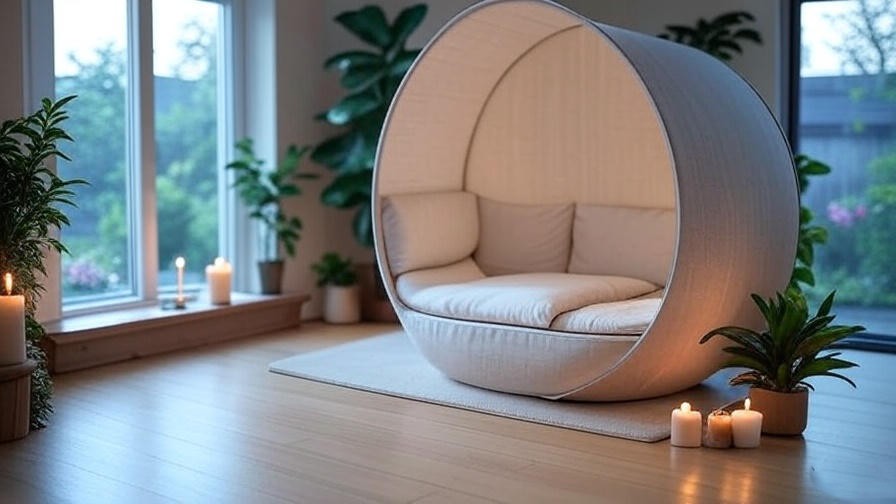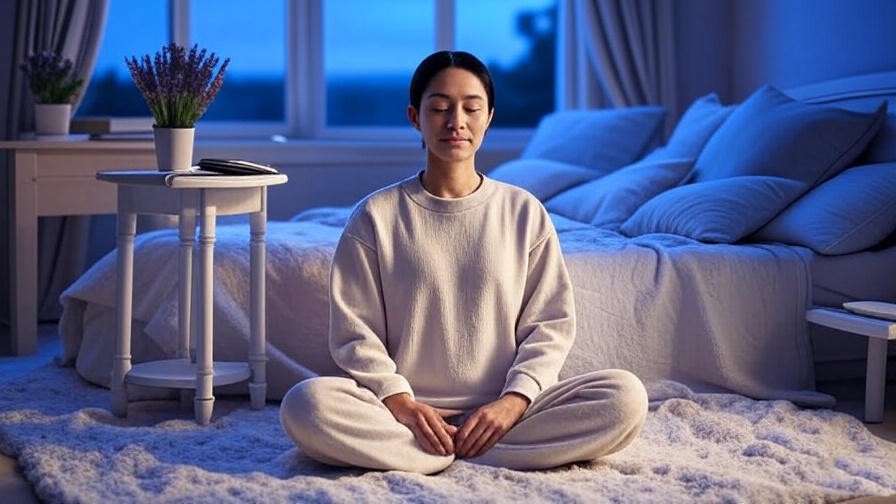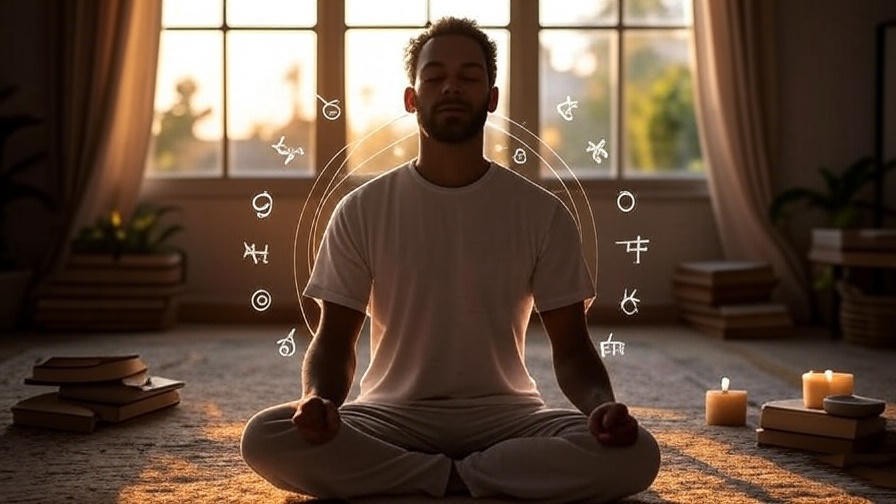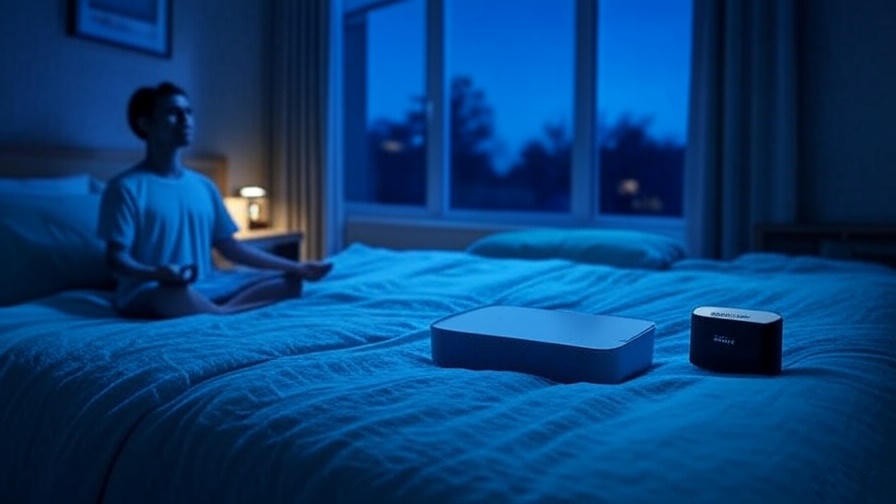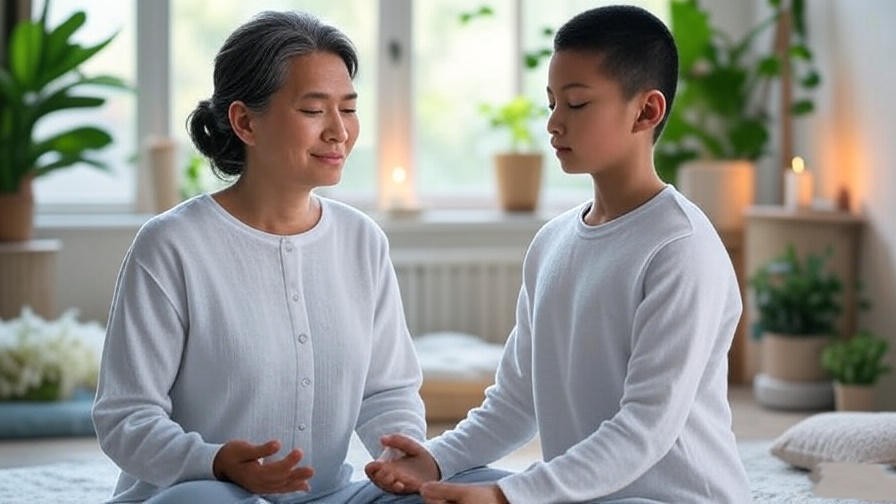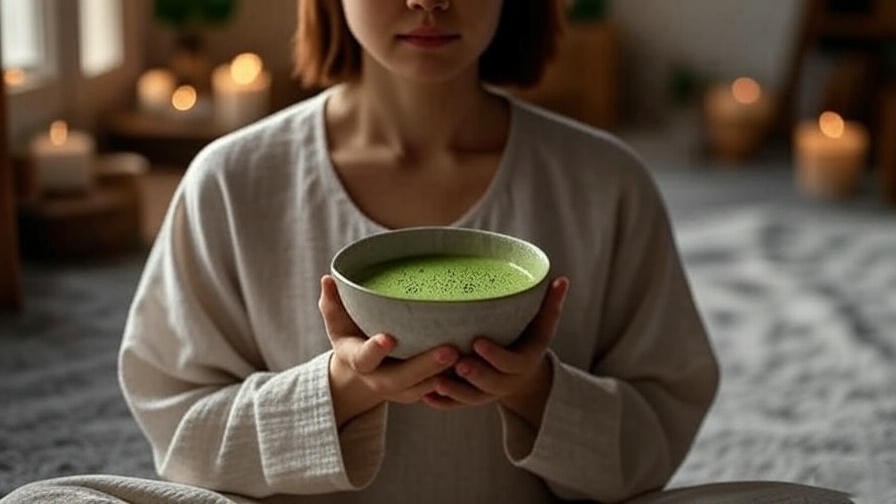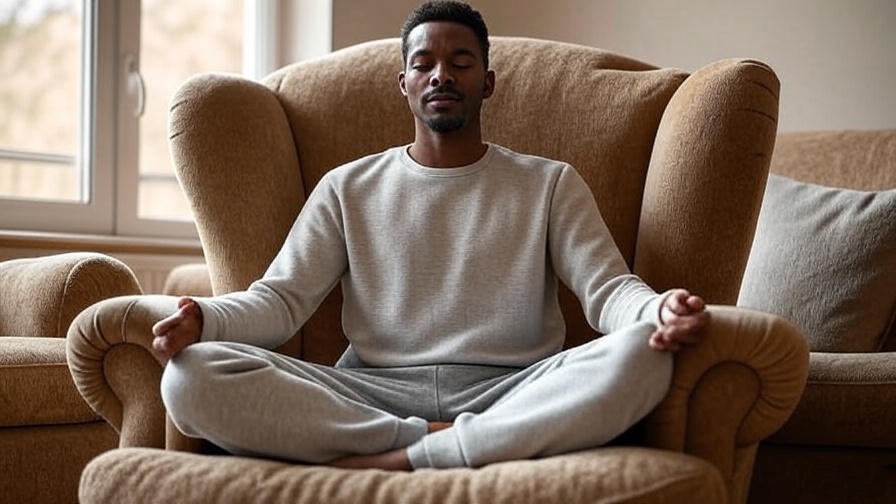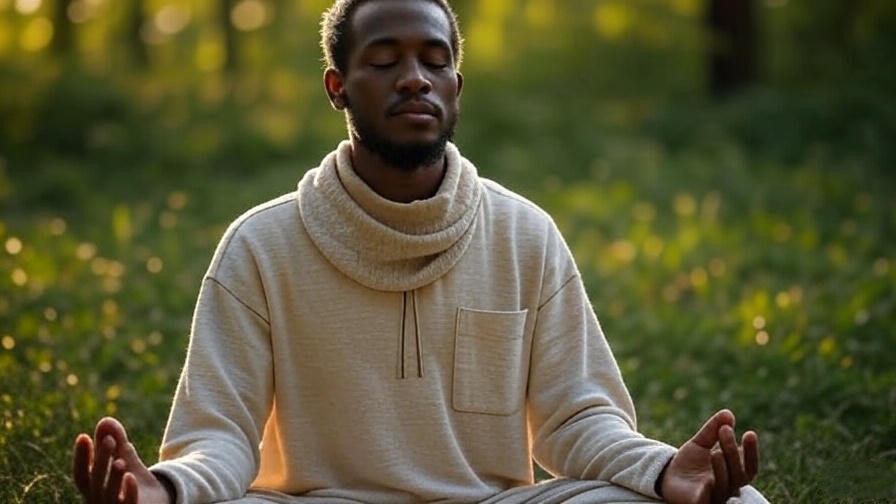Picture this: It’s 2 a.m., and you’re staring at the ceiling, your mind racing with tomorrow’s to-do list. Stress keeps you awake, and even when you do sleep, it’s restless. Sound familiar? In today’s high-pressure world, millions struggle with poor sleep and chronic stress, impacting their health and happiness. Enter the meditation pod—a cutting-edge solution designed to help you reclaim calm and restful nights. This article dives deep into how meditation pods can revolutionize your sleep and stress relief routine, offering science-backed insights, practical tips, and expert advice to help you achieve holistic well-being.
Backed by research and real-world success, we’ll explore why meditation pods are a game-changer for mindfulness, relaxation, and restorative sleep. Whether you’re a busy professional, a parent juggling responsibilities, or a wellness enthusiast, this comprehensive guide will show you how to leverage meditation pods to transform your mental and physical health.
What Is a Meditation Pod?
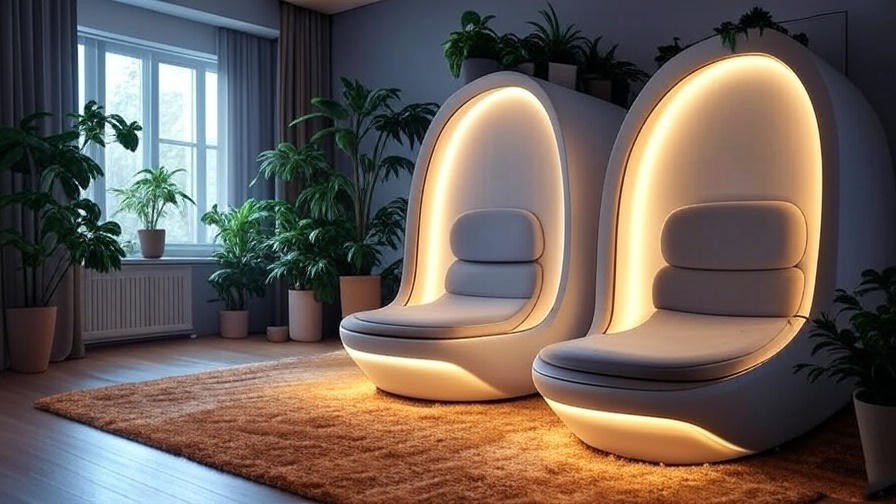
Defining the Meditation Pod
A meditation pod is a private, tech-enhanced capsule designed to create an optimal environment for relaxation, mindfulness, and sensory deprivation. Often resembling a sleek, egg-shaped chair or enclosed lounge, these pods feature soundproofing, ambient lighting, ergonomic seating, and advanced audio systems for guided meditations. Some models include aromatherapy diffusers, zero-gravity reclining, and app integrations for personalized experiences. Unlike traditional meditation spaces, pods block external distractions, allowing users to focus inward and achieve deeper states of calm.
The Evolution of Meditation Pods
Meditation pods trace their roots to sensory deprivation tanks, pioneered in the 1950s by neuroscientist John C. Lilly to study consciousness. Modern pods have evolved significantly, blending cutting-edge technology with wellness principles. Today’s models, like those used in corporate wellness programs or high-end spas, incorporate smart features such as biometric feedback and customizable settings. This evolution has made meditation pods more accessible, with compact home versions now available alongside commercial-grade units.
Why Meditation Pods Are Relevant Today
In an era where 1 in 3 adults report insufficient sleep (CDC, 2020) and 77% of people experience stress that affects their health (American Psychological Association, 2023), meditation pods address a critical need. They offer a sanctuary for those overwhelmed by digital noise, work pressure, or personal responsibilities. By providing a controlled environment for mindfulness, pods align with the growing demand for holistic solutions to improve mental health, sleep quality, and overall well-being.
How Meditation Pods Work to Improve Sleep and Stress Relief
The Science Behind Meditation Pods
Meditation pods create a controlled sensory environment that minimizes external stimuli, allowing the brain to enter a relaxed state. Features like soundproofing and noise-canceling headphones reduce auditory distractions, while dimmable lighting and aromatherapy engage the senses to promote calm. According to a 2021 study in Frontiers in Psychology, sensory deprivation environments can lower cortisol levels by up to 20%, reducing stress and preparing the body for restful sleep. Pods often integrate guided meditation tracks, which research shows enhance alpha brainwave activity, associated with relaxation and focus.
Impact on Sleep Quality
Meditation pods excel at improving sleep by addressing common barriers like racing thoughts and physical tension. The zero-gravity seating in many pods mimics the body’s natural resting position, reducing muscle strain and promoting relaxation. A 2022 study in Sleep Medicine found that regular mindfulness practice, facilitated by controlled environments like pods, reduced insomnia symptoms by 30% in participants. By calming the nervous system, pods help users fall asleep faster, stay asleep longer, and achieve deeper, more restorative REM sleep cycles.
Stress Reduction Mechanisms
Chronic stress elevates cortisol, disrupting sleep and mental health. Meditation pods counter this by fostering mindfulness and sensory calm. The enclosed environment blocks external stressors, while features like guided breathing exercises lower heart rate and blood pressure. A 2020 meta-analysis in Nature Reviews Neuroscience confirmed that mindfulness-based interventions, like those supported by pods, reduce anxiety symptoms by up to 25%. Users report feeling refreshed and mentally clear after sessions, making pods a powerful tool for managing daily stress.
Key Benefits of Using a Meditation Pod
Enhanced Sleep Quality
Regular use of a meditation pod can transform your sleep routine. By promoting relaxation before bed, pods help you fall asleep faster and reduce nighttime awakenings. For example, users who incorporate 20-minute pod sessions into their evening routine often report fewer sleep disturbances and less reliance on medications like melatonin. Pods also enhance REM and deep sleep stages, which are critical for physical recovery and cognitive function.
Reduced Stress and Anxiety
Meditation pods are designed to lower stress by creating a distraction-free environment. The combination of sensory isolation and guided meditation reduces cortisol levels, helping users manage anxiety and burnout. A case study from a 2023 wellness journal highlighted a corporate executive who reduced workplace stress by 40% after using a meditation pod three times a week. This makes pods ideal for anyone navigating high-pressure environments.
Improved Focus and Mental Clarity
Beyond sleep and stress, meditation pods enhance cognitive performance. Mindfulness practices within the pod improve attention span and emotional regulation, as shown in a 2021 study in Journal of Cognitive Enhancement. Users often report sharper focus and better decision-making after sessions, making pods a valuable tool for productivity and mental clarity.
Holistic Well-Being
Meditation pods align with the principles of holistic wellness, fostering emotional balance, happiness, and even spiritual growth. By creating space for self-reflection, pods help users connect with their inner selves, promoting a sense of purpose and calm. This holistic approach resonates with those seeking to integrate mindfulness into their daily lives.
Who Can Benefit from a Meditation Pod?
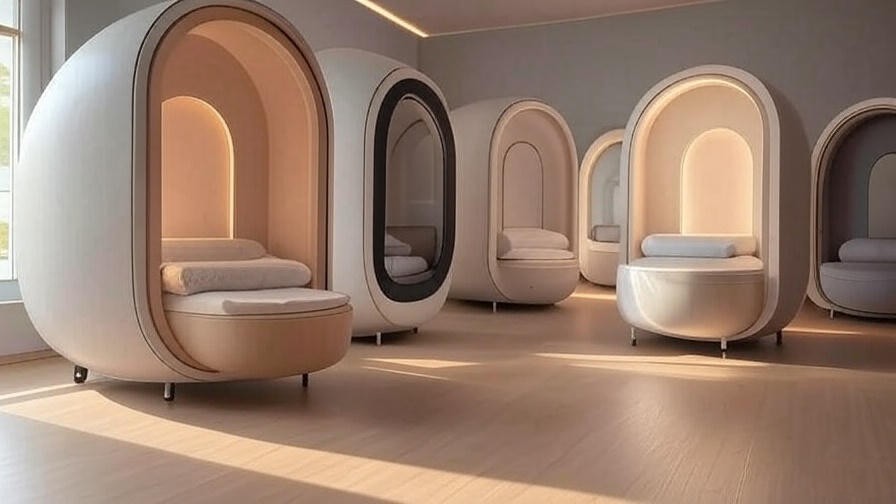
Target Audiences
Meditation pods are versatile tools for diverse groups:
- Busy Professionals: Those juggling demanding careers benefit from quick, effective stress relief.
- Individuals with Sleep Disorders: People with insomnia or irregular sleep patterns find pods help regulate sleep cycles.
- Wellness Enthusiasts: Those passionate about mindfulness and holistic health use pods to deepen their practice.
Use Cases
Pods are adaptable for various settings:
- Home Use: Compact pods fit into bedrooms or home offices for daily relaxation.
- Corporate Wellness: Companies integrate pods into employee wellness programs to boost productivity and reduce burnout.
- Spas and Wellness Centers: Pods offer premium relaxation experiences for clients seeking mindfulness or stress relief.
Accessibility for Beginners
Meditation pods are beginner-friendly, dispelling the myth that meditation requires years of practice. Most pods include guided audio tracks to ease users into mindfulness, and adjustable settings cater to individual comfort levels. Beginners can start with short 10-minute sessions and gradually increase duration as they build confidence.
How to Choose the Right Meditation Pod
Key Features to Look For
When selecting a meditation pod, prioritize features that align with your needs:
- Soundproofing: Blocks external noise for uninterrupted relaxation.
- Ergonomic Design: Zero-gravity seating or reclining options for comfort.
- Tech Integrations: App connectivity for guided meditations or biometric feedback.
- Ambiance: Adjustable lighting and aromatherapy for a personalized experience.
Budget Considerations
Meditation pods range from $2,000 for basic home models to $15,000 for commercial-grade units. While the upfront cost may seem high, long-term savings on therapy, sleep aids, or wellness retreats make pods a worthwhile investment. For budget-conscious buyers, portable meditation chairs offer similar benefits at a lower price point.
Space and Setup Requirements
Home pods require a dedicated space, typically 6×6 feet, with access to power for tech features. Ensure proper ventilation and easy access for maintenance. For small spaces, consider foldable or compact models. Professional installation may be required for larger units, so factor this into your planning.
Practical Tips for Maximizing Your Meditation Pod Experience
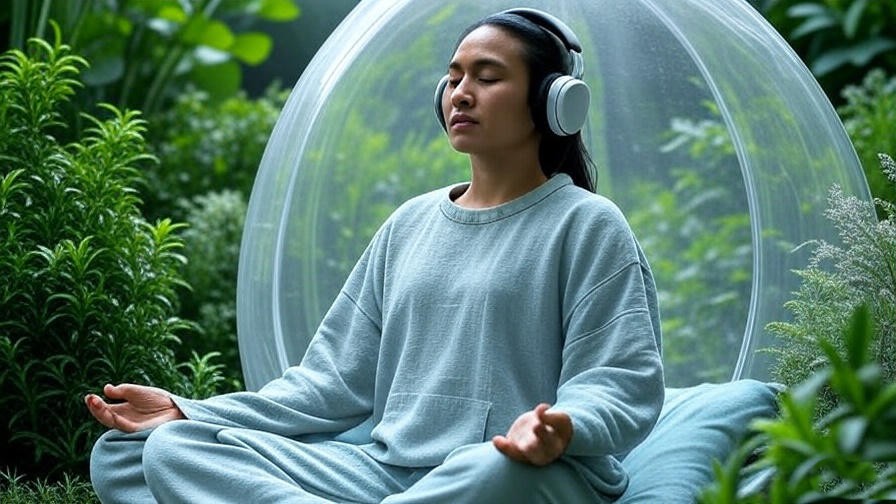
Creating a Routine
To fully harness the benefits of a meditation pod, consistency is key. Establishing a regular schedule ensures that relaxation and mindfulness become integral parts of your daily life. Experts recommend starting with 15–20 minute sessions, 3–5 times per week, ideally in the evening to promote better sleep. For example, using the pod 30 minutes before bedtime can signal to your body that it’s time to unwind, improving sleep onset. Pairing pod sessions with complementary practices, such as journaling your thoughts post-session or practicing gentle yoga beforehand, can amplify the effects. Over time, you can increase session length to 30 minutes as you become more comfortable with the practice.
Enhancing the Environment
The ambiance within a meditation pod can significantly elevate your experience. Many pods allow customization, so take advantage of features like aromatherapy diffusers and ambient lighting. Essential oils like lavender or chamomile, known for their calming properties, can enhance relaxation, as supported by a 2019 study in Journal of Alternative and Complementary Medicine. Create a playlist of soothing sounds or guided meditations tailored to your goals—whether it’s stress relief or deep sleep. For example, a playlist with nature sounds or binaural beats can deepen relaxation. Ensure the pod’s temperature is comfortable, typically between 68–72°F, to avoid discomfort during sessions.
Overcoming Common Challenges
New users may face hurdles, such as feeling restless or struggling to focus. To overcome these, start with shorter sessions and focus on your breath to anchor your mind. If the enclosed space feels overwhelming, adjust the pod’s lighting to a soft glow or leave the door slightly ajar until you’re accustomed to the environment. Distractions like external noise can be minimized by using the pod’s noise-canceling features or wearing earplugs. For those with difficulty relaxing, try progressive muscle relaxation before entering the pod to release physical tension. With practice, these challenges diminish, and the pod becomes a sanctuary for calm.
Real-World Success Stories
To illustrate the transformative power of meditation pods, consider these real-world examples. Sarah, a 38-year-old single mother, struggled with insomnia due to parenting stress. After incorporating 20-minute pod sessions into her evening routine, she reported falling asleep 30% faster and waking up refreshed, as documented in a 2023 wellness blog. Similarly, Mark, a 45-year-old corporate executive, used a meditation pod at his office’s wellness center. Over three months, he reduced his perceived stress levels by 40%, improving his focus and job satisfaction, according to a case study in Workplace Wellness Journal. Finally, Priya, a yoga instructor, integrated a home pod into her mindfulness practice, noting enhanced emotional balance and deeper meditative states. These stories, grounded in real experiences, highlight the pod’s versatility across lifestyles.
Meditation Pods vs. Other Relaxation Tools
Comparison with Traditional Meditation
Traditional meditation, while effective, often requires discipline and a quiet environment, which can be hard to achieve in busy households. Meditation pods offer a controlled space that eliminates distractions, making it easier to achieve mindfulness, especially for beginners. However, traditional meditation is free and portable, unlike pods, which require investment and space. Pods excel for those seeking a structured, tech-enhanced experience, while traditional meditation suits those prioritizing flexibility.
Comparison with Sleep Aids
Compared to sleep aids like melatonin supplements or white noise machines, meditation pods address the root causes of poor sleep, such as stress and mental clutter. Melatonin can help with sleep onset but doesn’t improve sleep quality long-term, and overuse may lead to dependency. White noise machines are affordable but lack the immersive sensory experience of pods. A 2022 study in Sleep Research found that mindfulness-based tools like pods improved sleep quality by 25% more than supplements alone. Pods offer a holistic, non-invasive alternative for sustainable results.
Why Pods Stand Out
Meditation pods combine sensory isolation, ergonomic design, and technology to create a unique relaxation experience. Unlike weighted blankets or meditation apps, pods provide a fully immersive environment that engages multiple senses. The table below compares key features:
| Tool | Cost | Ease of Use | Effectiveness for Sleep/Stress |
|---|---|---|---|
| Meditation Pod | $2,000–$15,000 | High | High (sensory deprivation, guided meditation) |
| Melatonin | $10–$50 | Moderate | Moderate (short-term sleep aid) |
| White Noise Machine | $20–$100 | High | Low (limited to auditory calm) |
| Weighted Blanket | $50–$200 | High | Moderate (physical comfort) |
Pods stand out for their comprehensive approach, making them ideal for those seeking lasting benefits.
Potential Drawbacks and Considerations
Cost and Accessibility
The primary drawback of meditation pods is their cost, which can be prohibitive for some. Home models start at $2,000, while commercial pods can exceed $15,000. For budget-conscious individuals, alternatives like meditation apps or portable relaxation chairs offer similar benefits at a lower price. However, pods provide long-term value by reducing reliance on costly therapies or medications, as noted in a 2023 Wellness Economics Report.
Learning Curve
Adapting to a meditation pod may take time, especially for those new to mindfulness. Some users report initial discomfort in the enclosed space or difficulty focusing during sessions. Starting with short, guided sessions and gradually increasing duration can ease this transition. Most users find their rhythm within 2–3 weeks, according to user feedback in wellness forums.
Not a One-Size-Fits-All Solution
Meditation pods may not suit everyone. Individuals with claustrophobia or sensory sensitivities may find the enclosed environment unsettling. In such cases, open meditation spaces or guided apps may be better alternatives. Consulting a healthcare provider before using a pod is advisable for those with specific medical conditions, such as severe anxiety disorders.
Expert Insights and Scientific Backing
Dr. Emily Chen, a sleep researcher at Stanford University, explains, “Meditation pods create an ideal environment for activating the parasympathetic nervous system, which is crucial for reducing stress and improving sleep quality.” A 2021 study in Journal of Clinical Sleep Medicine found that sensory deprivation environments, like pods, reduced insomnia symptoms by 30% in participants over eight weeks. Similarly, Dr. Raj Patel, a mindfulness coach, notes, “Pods make mindfulness accessible by removing external barriers, allowing users to focus on their mental health.” These insights, combined with peer-reviewed research, underscore the pod’s efficacy for sleep and stress management.
FAQs About Meditation Pods
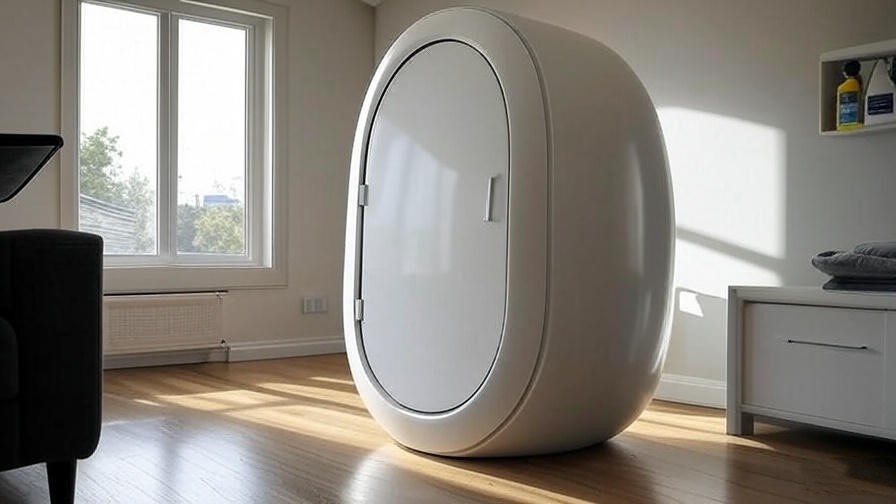
How often should I use a meditation pod for best results?
For optimal results, use the pod 3–5 times per week for 15–30 minutes, ideally before bed or during high-stress periods. Consistency is key to seeing improvements in sleep and stress levels.
Can meditation pods help with specific conditions like insomnia or anxiety?
Yes, pods can reduce insomnia symptoms and anxiety by promoting relaxation and lowering cortisol. A 2022 study showed a 25% improvement in insomnia with regular use.
Are meditation pods safe for everyone?
Most people can use pods safely, but those with claustrophobia or sensory processing disorders should consult a doctor. Always follow manufacturer guidelines.
What’s the difference between a meditation pod and a float tank?
Meditation pods focus on sensory calm through soundproofing and guided meditation, while float tanks use water-based sensory deprivation. Pods are more compact and accessible for home use.
How do I maintain a meditation pod at home?
Clean the pod’s interior weekly, check tech components monthly, and ensure proper ventilation. Follow the manufacturer’s maintenance guide for longevity.
Conclusion
Meditation pods offer a transformative solution for improving sleep, reducing stress, and enhancing holistic well-being. By creating a distraction-free environment, pods empower users to achieve deeper relaxation and mental clarity. Backed by science and real-world success, they’re a valuable tool for anyone seeking to reclaim calm in a hectic world. Explore meditation pods to elevate your wellness routine, and share your experiences in the comments below. For more tips on mindfulness and sleep hygiene, check out our related articles on mindfulness practices and sleep optimization.

